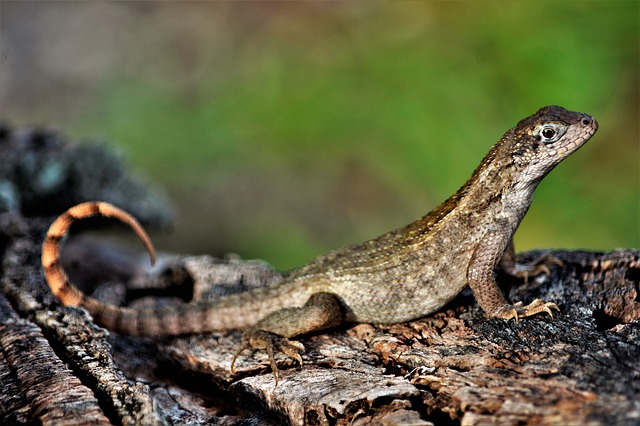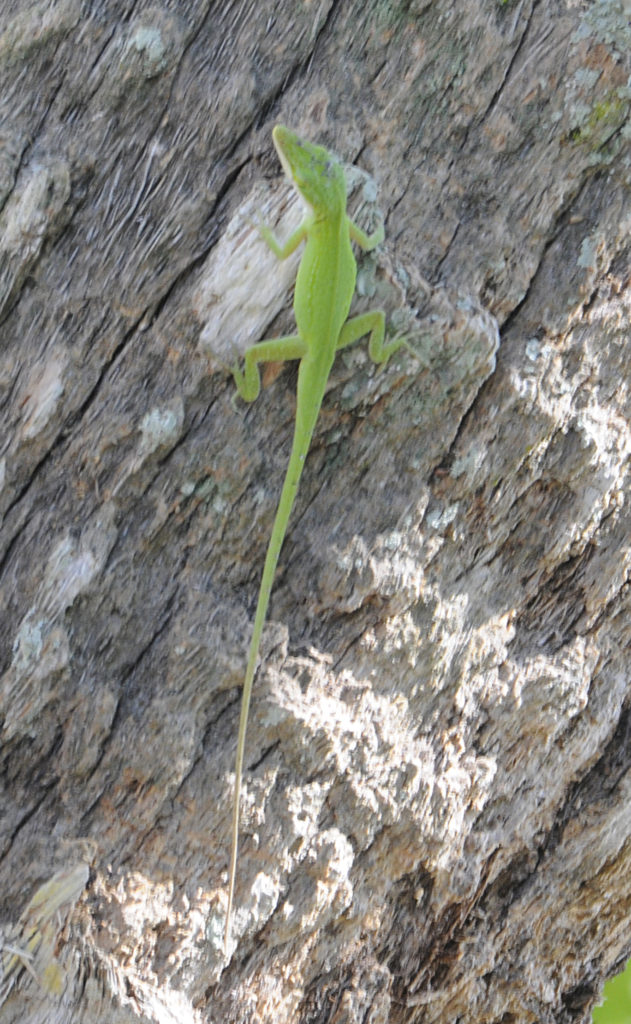
Q: Would you comment on Curly-tailed Lizards, an invasive exotic species?
Thanks,
Bruce, Port St Lucie, FL
A: The State of Florida spends millions of dollars annually controlling invasive plants on public lands. But plants are not the only living things to invade our shores. It is estimated that Florida is plagued by one new pest, plant, insect, fungus, virus, or animal a week through importation, either intentionally or unintentionally. Alien invaders are expensive to Floridians regarding dollars spent on inspection and control and the loss of native habitats, species, and ultimately ecosystems.
The Florida Wildlife Commission (FWC) reports that the Northern Curly-tailed Lizard was intentionally released in Palm Beach County in the 1940s, and it has been spreading ever since. The release was made to control insects in sugarcane fields. However, several other authorities think more than likely most of the introductions of this exotic to Florida came from pet trade releases or from transportation, willing or unwilling, aboard watercraft from the Bahamas where Curly-tailed lizards originate. FWC also reports the spread of this species to some counties as early as 1991 and as late as 2003.
Curly-tailed Lizards have been here for a while. I called my favorite expert once again for the lowdown. Dan Martinelli, previous Executive Director of the Treasure Coast Wildlife Center. Dan reported Curly-tailed Lizards are more visible than abundant. He said, “They have specific habitat preferences and seem to like to live in places with hard surfaces such as rocks piles and limestone outcroppings. Unlike the native anole, which prefers trees and higher locations. Their range is spreading, but spotty, which indicates they move about by human distribution.” As to diet, Martinelli said Curly-tails are opportunists and will eat just about anything but seem to be most fond of insects, carrion, and anything easy they come across. Dan Martinelli passed in 2019, and I miss his humor, friendship, and constant willingness to help.

What all this means is that Curly-tails tend to show up around humans, not the swamps, uplands, dunes, or other native areas. We build the hard things out of concrete or asphalt they prefer to live on. They eat what we leave behind, and though they did not originate here, they do not seem to be preying on native species.
However, while traveling this year, finally! When you return home, leave the plants, critters, and fruits behind, you never know when some alien invader will do real damage to the paradise we call home. Visit the FWC website for more information about invasive animal species and stop by or visit the Treasure Coast Wildlife Center to chat about and see some of the native and exotic critters found in parts of Florida.
This article first appeared in the Treasure Coast Newspapers.
Have one as a pet
Very cool! Let see a picture.